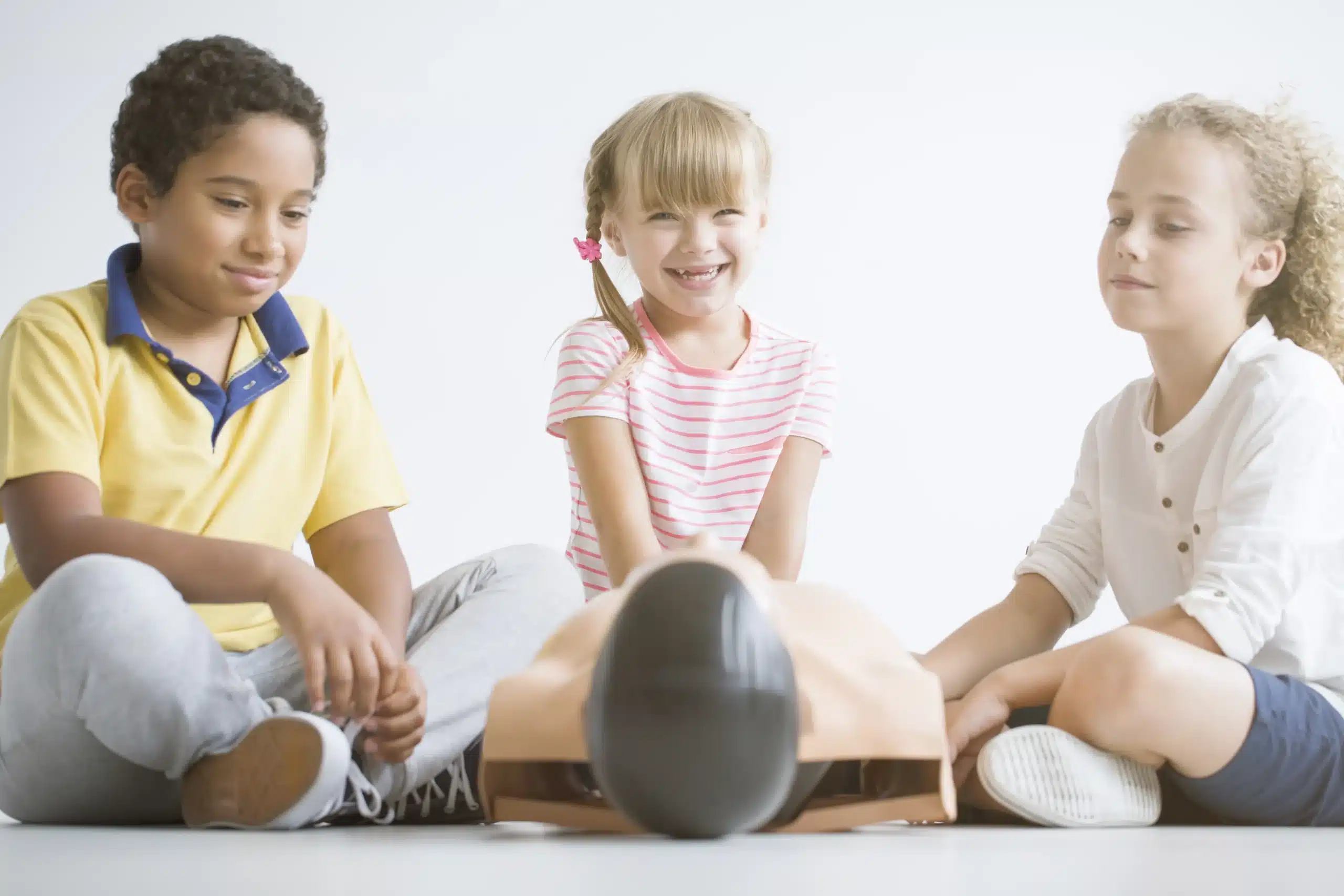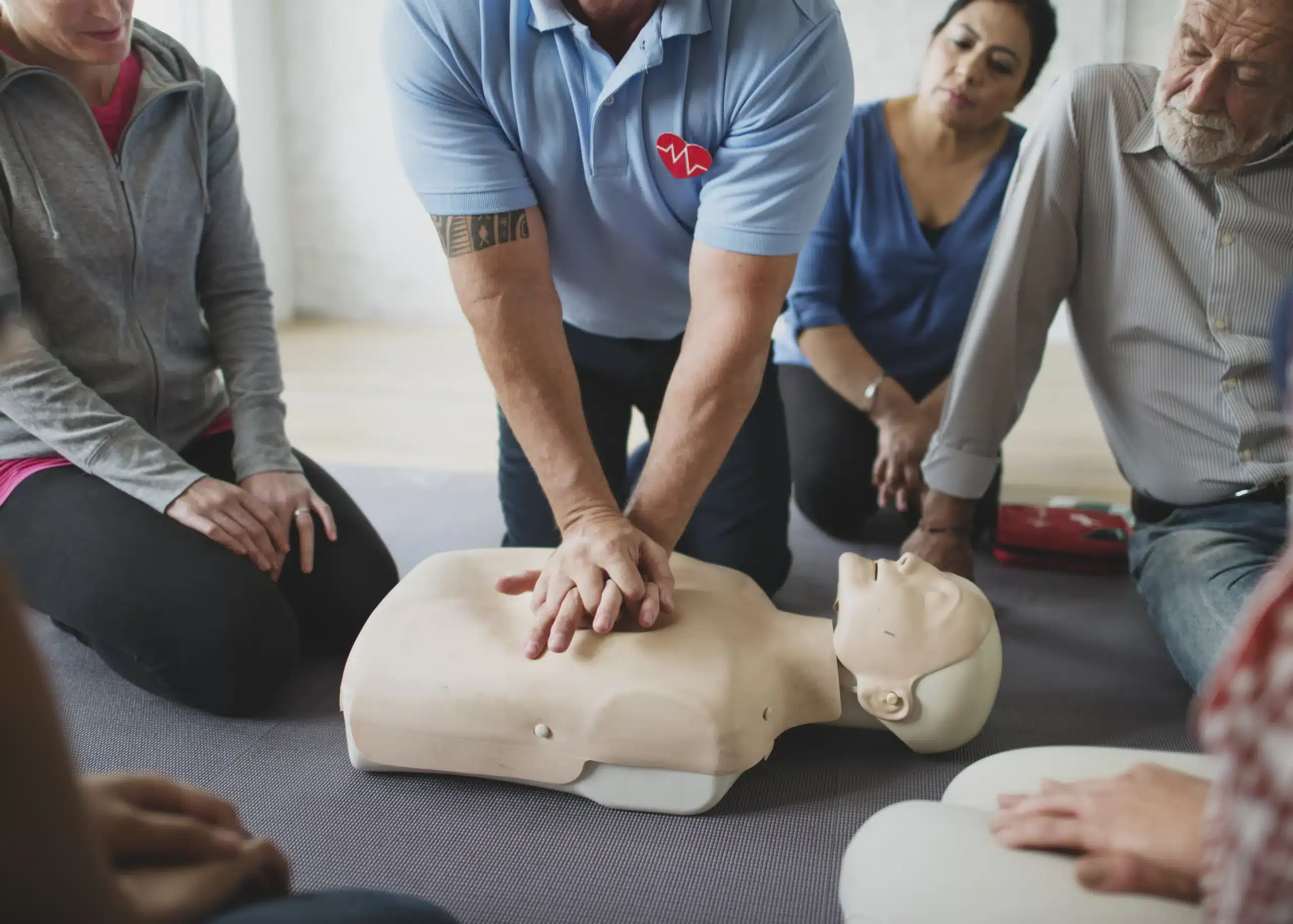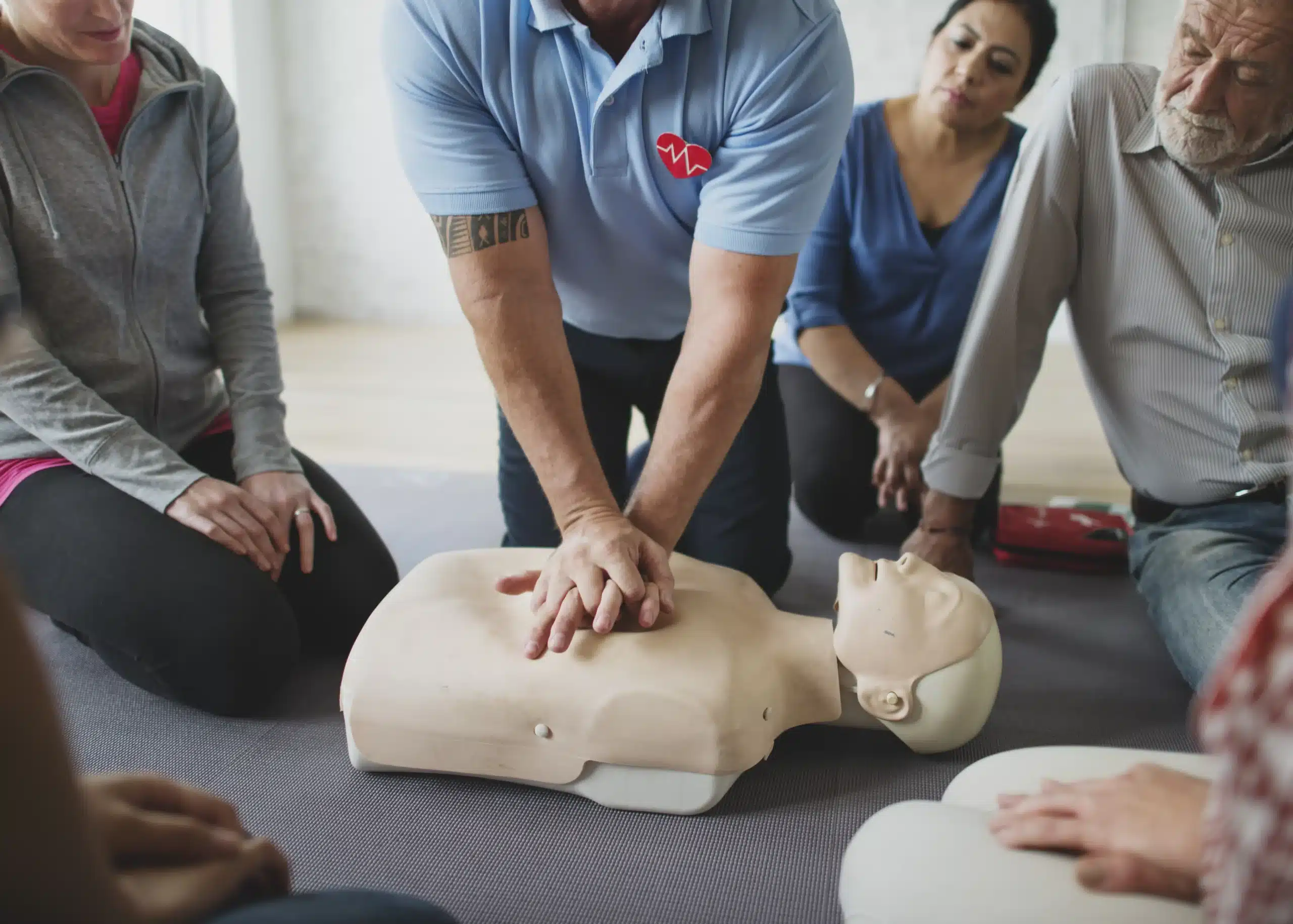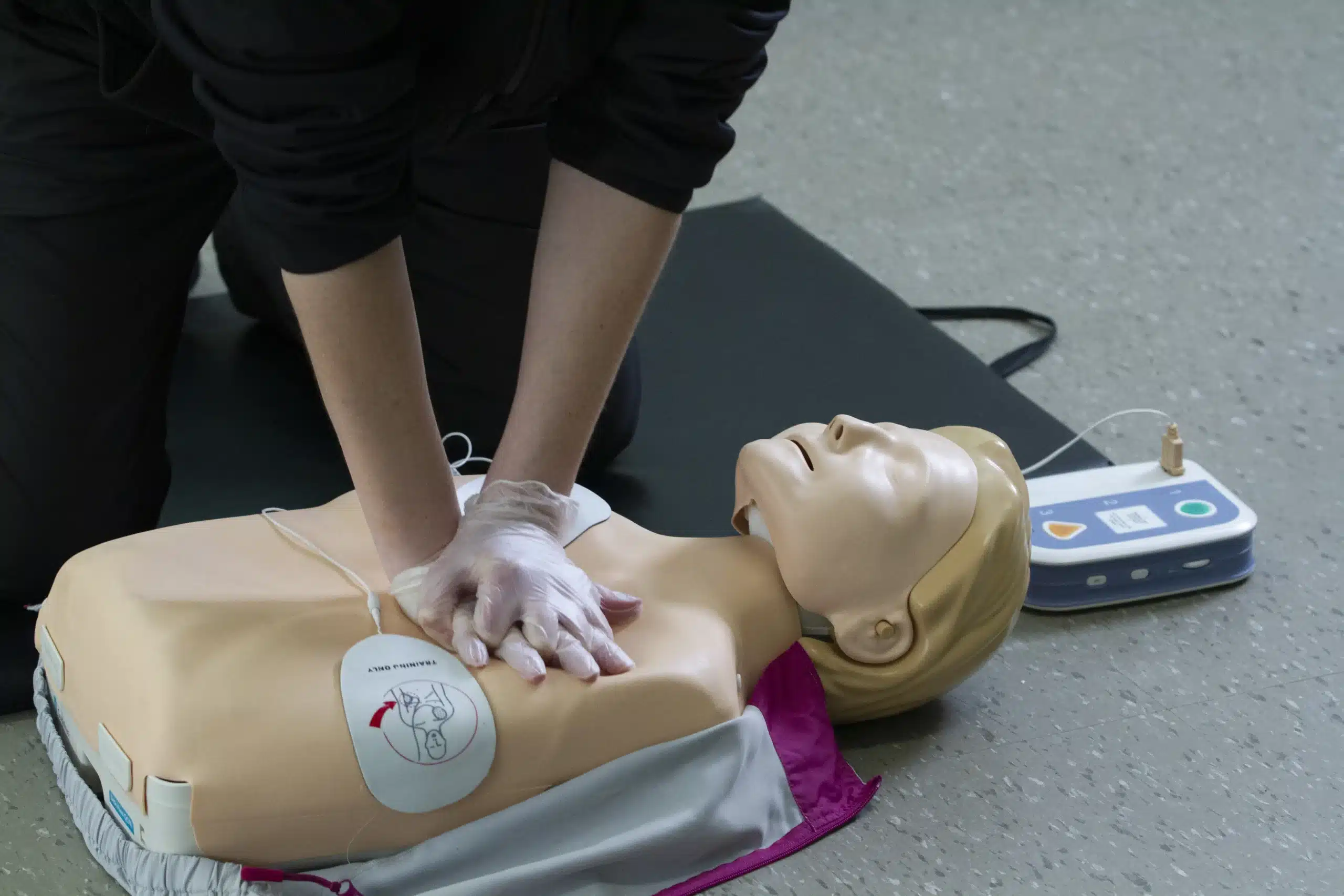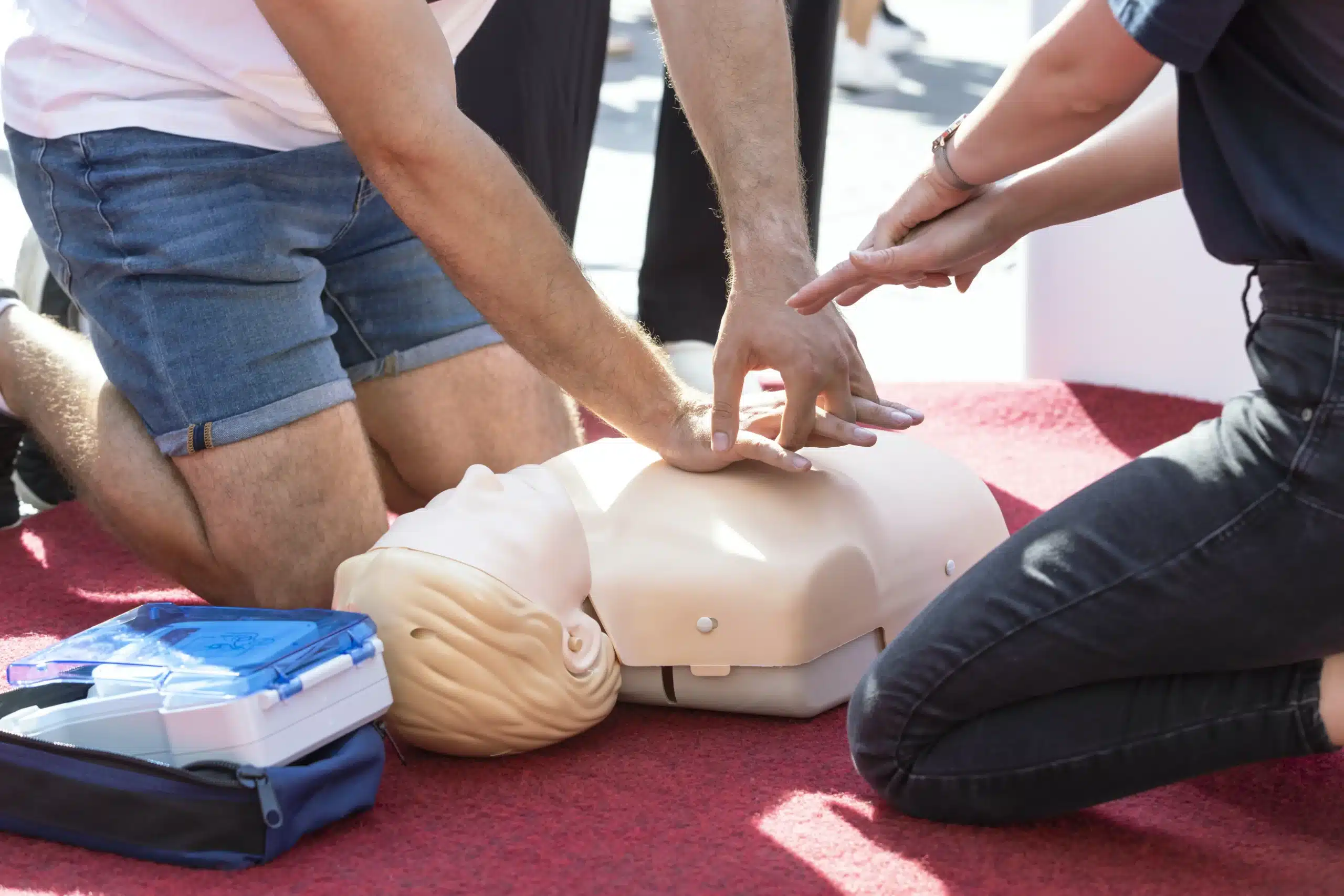Emergencies happen, and knowing CPR can make all the difference. If you’re looking for CPR courses in Cupertino, you’re in the right place. This guide will walk you through the various CPR training options, from basic life support to advanced certifications. We’ll explore what each course covers, who it’s designed for, and how to find reputable providers in Cupertino. We’ll also discuss the costs involved, how to maintain your certification, and debunk some common CPR myths. Whether you’re a healthcare provider, a teacher, a parent, or simply someone who wants to be prepared, this guide will help you navigate the world of CPR training in Cupertino.
Key Takeaways
- Find the right CPR training for you: Whether you’re a parent, teacher, or healthcare professional, there’s a CPR course designed to meet your specific needs. Explore options ranging from basic life support to advanced certifications.
- Choose a reputable provider: Look for qualified instructors, convenient locations like Campbell CPR Classes, and consider factors like cost and available discounts. Reading reviews and seeking recommendations can help you find the best fit.
- Keep your skills current: CPR certification typically lasts two years. Stay prepared by taking renewal courses and practicing regularly. Even quick refreshers can boost your confidence and ensure you’re ready to act when it matters most.
What is CPR Training in Cupertino?
CPR training in Cupertino gives people the skills to handle medical emergencies. Whether you’re a healthcare professional, a parent, or just someone who wants to be prepared, understanding the different CPR training options is key. These courses range from the basics of life support to advanced certifications for healthcare providers.
CPR Training Options
Several CPR training courses meet different needs and skill levels:
-
Basic CPR: This course covers the fundamentals: chest compressions, rescue breaths, and how to spot a cardiac arrest. It often includes AED training, too. Basic CPR is a great starting point for anyone wanting to learn life-saving skills.
-
BLS (Basic Life Support): BLS certification builds on basic CPR with a more in-depth approach to life support. It’s designed for healthcare providers and other professionals who might handle medical emergencies on the job. BLS courses cover more ground, including airway management, ventilation techniques, and teamwork during resuscitation. Learn more about BLS certification on the Campbell CPR Classes website.
-
ACLS (Advanced Cardiovascular Life Support): ACLS is an advanced course for healthcare professionals who manage complex cardiovascular emergencies. It covers topics like ECG interpretation, pharmacology, and advanced airway management. ACLS certification requires a solid base in basic life support and is essential for doctors, nurses, paramedics, and other healthcare providers.
-
PALS (Pediatric Advanced Life Support): PALS focuses on the specific needs of infants and children in medical emergencies. This specialized training covers pediatric airway management, fluid resuscitation, and recognizing signs of respiratory distress in children. PALS certification is vital for healthcare providers working with young patients.
-
First Aid and Pediatric CPR: This combined course offers a practical way to handle common injuries and pediatric emergencies. You’ll learn essential first aid skills, like treating cuts, burns, and fractures, along with pediatric CPR techniques. This course is especially helpful for parents, caregivers, teachers, and anyone who works with children.
Compare CPR Course Types
Choosing the right CPR course depends on what you need and want to achieve. Here’s a comparison to help you decide:
-
Course complexity and focus: Basic CPR provides a foundation in life-saving techniques, while BLS, ACLS, and PALS offer increasingly specialized knowledge and skills for healthcare professionals. The course content and focus area change depending on the certification level.
-
Target audience and certifications: Basic CPR and First Aid/Pediatric CPR are suitable for many people, including community members, parents, and teachers. BLS, ACLS, and PALS certifications are usually required for healthcare providers and those in specific medical fields. Think about your career goals and personal needs when choosing a course.
Find CPR Training in Cupertino
Finding the right CPR class can feel overwhelming, but focusing on a few key factors can simplify your search. Start by looking for reputable providers with qualified instructors and convenient locations.
Reputable CPR Providers
Cupertino residents have several excellent options for CPR training. For high-quality, affordable instruction, check out Campbell CPR Classes, conveniently located nearby. They even offer a low price guarantee and group discounts, making them a budget-friendly choice. You can also explore courses offered through the American Heart Association and the American Red Cross in nearby San Jose. Additionally, local hospitals and community centers often host CPR training sessions.
Evaluate Instructor Qualifications
Once you’ve identified a few potential providers, take the time to research their instructors. Look for instructors with current certifications from recognized organizations like the American Heart Association or the American Red Cross. Experience matters, so consider how long the instructor has been teaching CPR. Finally, confirm that the course includes plenty of hands-on practice and feedback, as this is essential for developing confidence and competence in performing CPR. A good instructor will create a supportive learning environment where you feel comfortable asking questions and practicing your skills.
What to Expect in a CPR Course
So, you’re ready to learn CPR? Great! Knowing what to expect can help you feel prepared and confident. CPR courses are designed to equip you with the skills and knowledge to respond effectively in emergencies. Let’s explore the typical format and content.
Course Formats and Length
CPR courses are offered in several formats to fit your schedule and learning style. In-person training provides hands-on learning in a traditional classroom setting. If you prefer learning at your own pace, online CPR training might be a good fit. This usually involves an online component followed by an in-person skills session. For a balance of both, blended learning combines online coursework with hands-on skills practice. Most CPR courses range from two to four hours, depending on the format and the level of certification. The Santa Clara County Fire Department offers a variety of CPR courses to explore.
Learn CPR Skills and Knowledge
A CPR course covers essential life-saving skills and techniques. You’ll learn the theory behind CPR, understanding why early intervention is so crucial. Expect to dive into the chain of survival, a series of actions that improve the chances of survival from cardiac arrest. Courses include hands-on practice of CPR techniques for adults, children, and infants. You’ll work with mannequins to develop the muscle memory and confidence to perform compressions and rescue breaths effectively. Additionally, training covers the use of Automated External Defibrillators (AEDs), which are essential tools for treating sudden cardiac arrest. By the end of the course, you’ll be well-prepared to respond to emergencies and provide critical care until professional help arrives. You can find more information on CPR training and AED use from the American Red Cross.
CPR Training Costs in Cupertino
CPR training is an investment in your skills and the well-being of your community. Understanding associated costs can help you plan effectively.
Course Pricing and Discounts
CPR course fees in Cupertino vary based on the type of course and the training provider. You’ll find options ranging from basic CPR and First Aid to more advanced certifications like ACLS and PALS. For example, an AHA Heartsaver CPR/AED course is often priced around $65 at Campbell CPR Classes. Check with various providers for their latest pricing. Campbell CPR Classes offers a low price guarantee, ensuring competitive rates for quality training. Also, inquire about group discounts if you’re training with a group, which can make training more affordable.
Invest in Life-Saving Skills
Learning CPR is more than just fulfilling a requirement; it’s about equipping yourself with life-saving skills. Knowing CPR empowers you to respond confidently during emergencies like cardiac arrest or near-drowning incidents. These skills can also significantly advance your career, especially in healthcare, education, and fitness-related fields. Ultimately, CPR training contributes to a safer community by increasing the number of people prepared to provide immediate assistance. Consider CPR training a valuable investment in yourself, your career, and the well-being of those around you.
Choose the Right CPR Course
So, you’re ready to learn CPR? Great! Figuring out which CPR class is right for you can feel a little overwhelming with so many options. This section will walk you through key factors to consider and debunk some common myths that might be holding you back.
Consider These Factors
First, think about your personal and professional needs. Are you learning CPR to advance your healthcare career, or are you a parent wanting to be prepared for emergencies at home? If you need certification for a specific job, like nursing, make sure the course aligns with workplace requirements. For example, healthcare providers often require BLS Certification. If you’re looking for general knowledge and peace of mind, a basic CPR and First Aid course might be perfect.
Next, consider your learning style and schedule. Do you prefer in-person, hands-on instruction, or does the flexibility of online learning sound more appealing? Think about how much time you can realistically commit to a course. Some programs offer blended learning, combining online modules with in-person skills sessions, offering a nice balance. Campbell CPR Classes offer flexible scheduling to fit your busy life.
Finally, don’t hesitate to check course reviews and feedback from past students. Reading reviews can give you valuable insights into the quality of instruction, the course format, and the overall learning experience. Consider reaching out to friends or colleagues who have taken CPR courses for their recommendations.
Debunk CPR Myths
Let’s clear up some common misconceptions about CPR training. One persistent myth is that only healthcare professionals can perform CPR. This simply isn’t true. Anyone can learn CPR and potentially save a life. Proper training empowers individuals to provide immediate care in emergencies. Another myth is that mouth-to-mouth resuscitation is always necessary. While rescue breaths are part of some CPR protocols, chest compressions are the most critical component. High-quality chest compressions are often sufficient until professional help arrives. Learn more about CPR.
Worried about the cost? It’s a myth that CPR training is always expensive. Many affordable options are available, including group discounts at Campbell CPR Classes. They even offer a low price guarantee. And please, don’t rely on TV shows or movies for CPR instruction! Accurate, hands-on training from a qualified instructor is essential for learning proper techniques and building confidence. Contact Campbell CPR Classes to discuss your options and find the perfect course for you.
Maintain Your CPR Certification
CPR skills are like any other—they get rusty if you don’t use them. Staying current with your CPR certification isn’t just a formality; it’s about ensuring you’re ready to act confidently in a real emergency. Here’s how to maintain your CPR skills and knowledge:
Get and Renew Your Certification
Initial CPR certification is typically valid for two years. You’ll need to take a renewal course before your current certification expires to stay up-to-date on the latest guidelines and techniques. Check with your certifying organization, such as the American Heart Association or the Red Cross, for specific renewal requirements. Campbell CPR Classes offers various renewal courses to fit your schedule and learning preferences. Staying informed about the latest CPR guidelines is crucial, as these can change based on new research and best practices.
Continue Learning CPR
Even between renewals, there are ways to keep your CPR skills sharp. Consider taking refresher courses or practicing with friends and family. The Santa Clara County Fire Department offers a range of CPR training options, from quick overviews to comprehensive certified courses. Online resources can also be valuable for reinforcing your knowledge and practicing key concepts. While online-only CPR certifications aren’t usually sufficient for workplace requirements, they can be a helpful supplement to your in-person training. Think of it as a tune-up—regular practice can make all the difference when it matters most.
Related Articles
- CPR Classes in Cupertino: Your Ultimate Guide – Campbell CPR Classes
- CPR & First Aid Training in Cupertino: Your Guide – Campbell CPR Classes
- RQI Training in Cupertino: Your Guide to Better CPR – Campbell CPR Classes
Frequently Asked Questions
What’s the difference between CPR and First Aid?
CPR focuses specifically on life-threatening situations like cardiac arrest and near-drowning, concentrating on chest compressions and rescue breaths to keep blood and oxygen flowing. First Aid covers a broader range of injuries and illnesses, from cuts and burns to sprains and allergic reactions. Often, you’ll find courses that combine both CPR and First Aid training.
How do I choose the right CPR class for me?
Think about why you’re learning CPR. If it’s for a job, make sure the course meets your employer’s requirements. Healthcare providers usually need BLS, ACLS, or PALS certification. For personal knowledge or to feel more prepared at home, a basic CPR/First Aid course might be perfect. Also, consider your learning style and schedule – in-person, online, or a blended approach.
How often do I need to renew my CPR certification?
Most CPR certifications are valid for two years. Check with your certifying organization (like the American Heart Association or Red Cross) for their specific renewal guidelines. Staying current ensures you’re always up-to-date on the latest life-saving techniques.
Is online CPR training enough?
While online CPR training can be a great way to learn the basics or refresh your knowledge, it typically doesn’t meet requirements for workplace certification. Most organizations require an in-person skills assessment and practice component. Think of online training as a helpful supplement, not a replacement for hands-on learning.
What if I’m nervous about performing CPR in a real emergency?
It’s completely normal to feel apprehensive. That’s why good CPR training includes plenty of hands-on practice and feedback in a supportive environment. The more you practice, the more confident you’ll become. Remember, any attempt at CPR is better than none. You’re learning these skills to potentially save a life, and even basic CPR can make a huge difference until professional help arrives.


